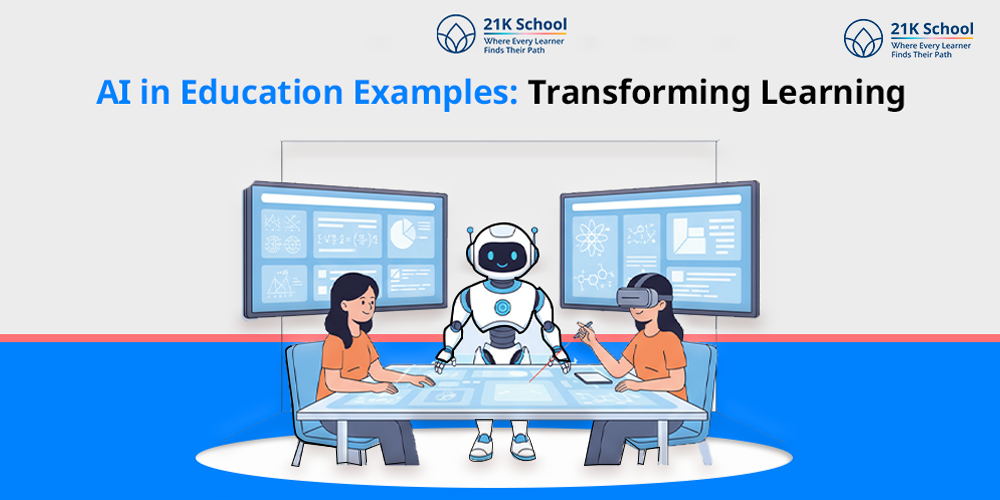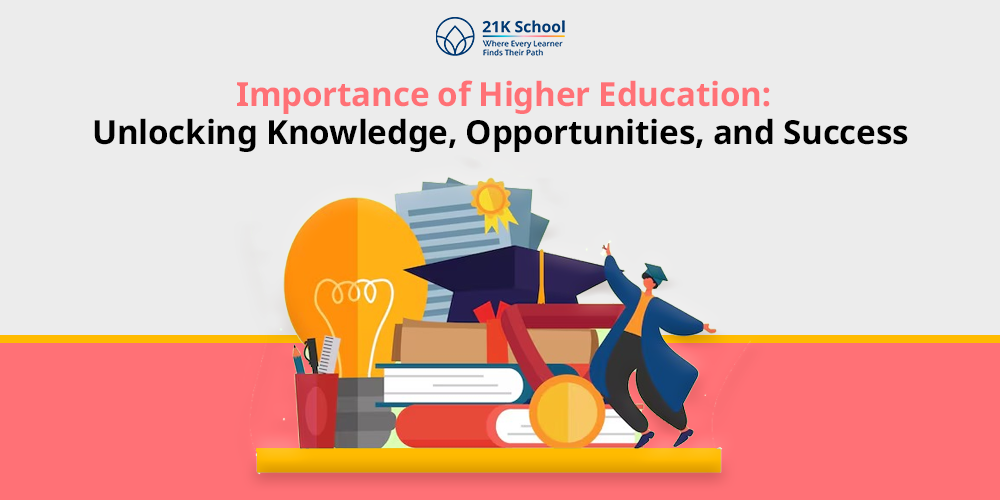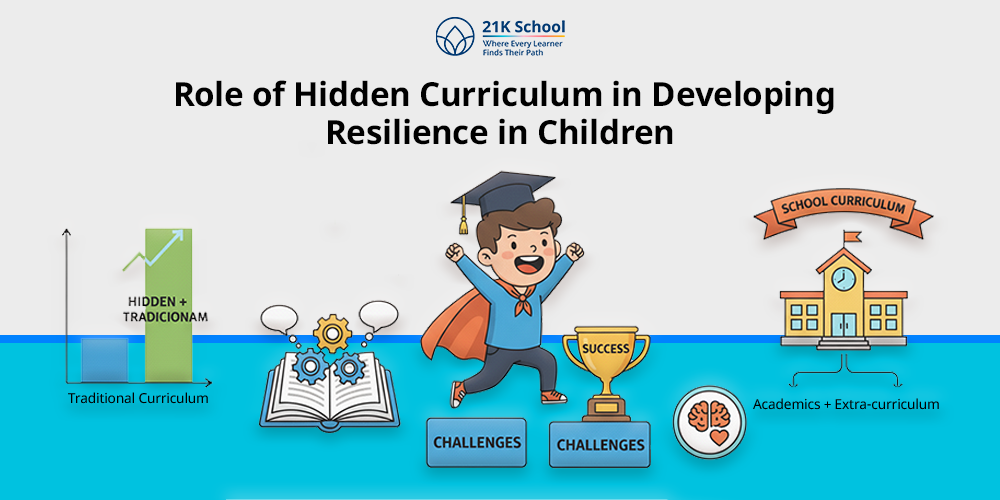Interdisciplinary learning has changed traditional education by combining different subjects to solve a difficult problem by using a single discipline.
Interdisciplinary learning is an alternative method that allows students to think from different perspectives and allows them to solve problems according to the principles and disciplines.
This learning method also allows students to combine a theoretical approach and a practical approach in order to create solutions for the existing problem.
This method enables students to achieve skill sets, think differently and tackle problems according to the complexity of the scenarios. Interdisciplinary learning also helps in enhancing problem-solving skills, enhance creative thinking skills and promoting holistic education among students.
Interdisciplinary learning breaks the boundaries of traditional education and makes connections with other subjects in order to generate new disciplines of learning.
Table of Contents
What is Interdisciplinary Learning?
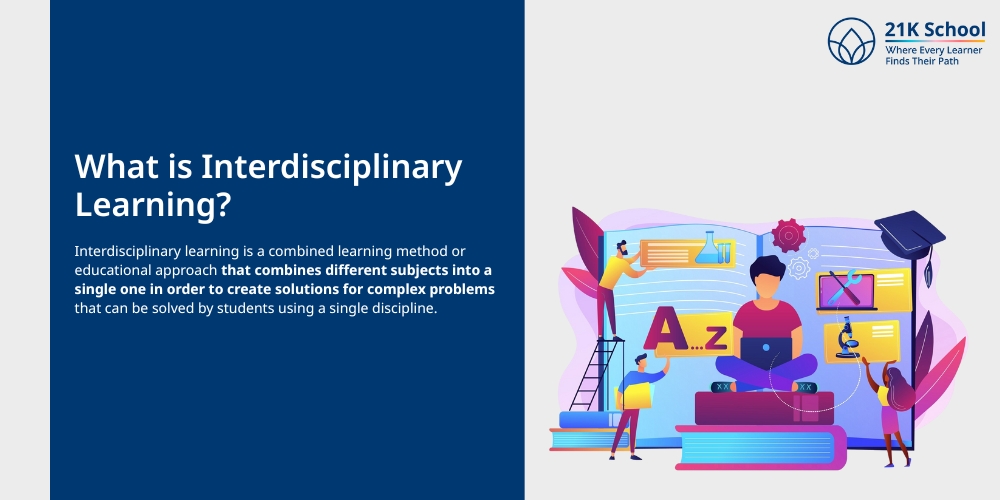
Interdisciplinary learning is a combined learning method or educational approach that combines different subjects into a single one in order to create solutions for complex problems that can be solved by students using a single discipline.
Interdisciplinary learning breaks the approaches of traditional schooling and creates an alternative form of learning method for students.
In interdisciplinary learning, all subjects such as English, Maths, Science, History, Political Science, etc. will remain in the same curriculum, and one subject has no relation with other subjects.
Interdisciplinary learning is not only limited to academics but also works in professional life. Through interdisciplinary learning working professionals can analyse the concepts of real-world problems and apply the solutions according to the approaches.
Interdisciplinary Learning Methods
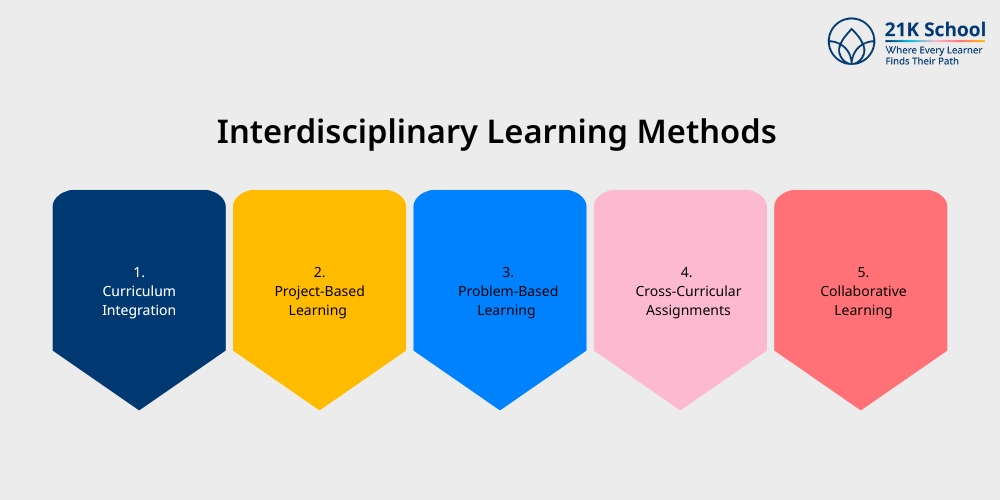
Interdisciplinary learning has various methods which are also applicable to interdisciplinary teaching. Interdisciplinary learning breaks the limits of traditional subjects to integrate subjects across multiple disciplines.
This learning approach enables students to integrate different subjects and encourages new approaches to problem-solving. Different methods of interdisciplinary learning require multiple perspectives in order to overcome the real-world scenarios.
Below, you can check the methods of interdisciplinary learning.
1. Curriculum Integration
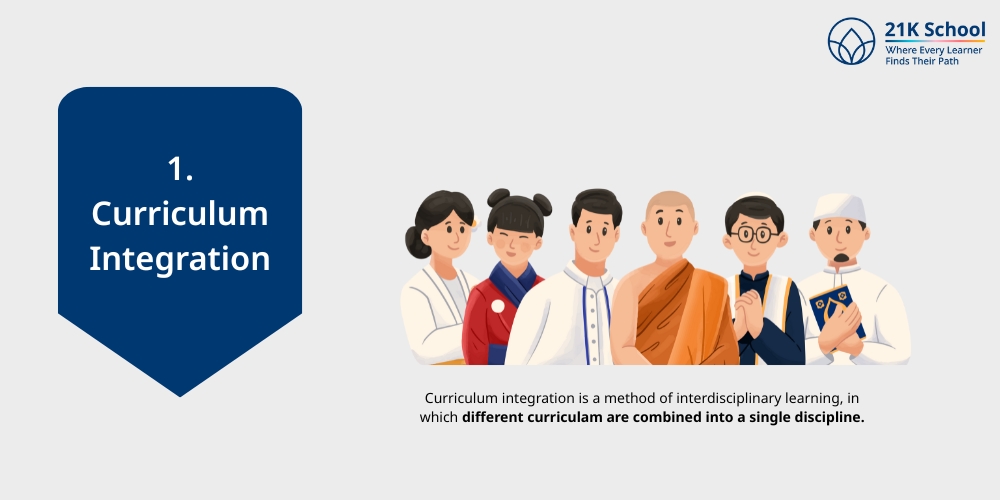
Curriculum integration is a method of interdisciplinary learning, in which different curricula are combined into a single discipline. This method allows for making connections between subjects by integrating courses into a single aspect.
This method assists students in getting in-depth knowledge of every subject into a single period and helps in achieving flow in education. With the help of this method students are encouraged to see how various disciplines are interconnected into a single aspect.
2. Project-Based Learning
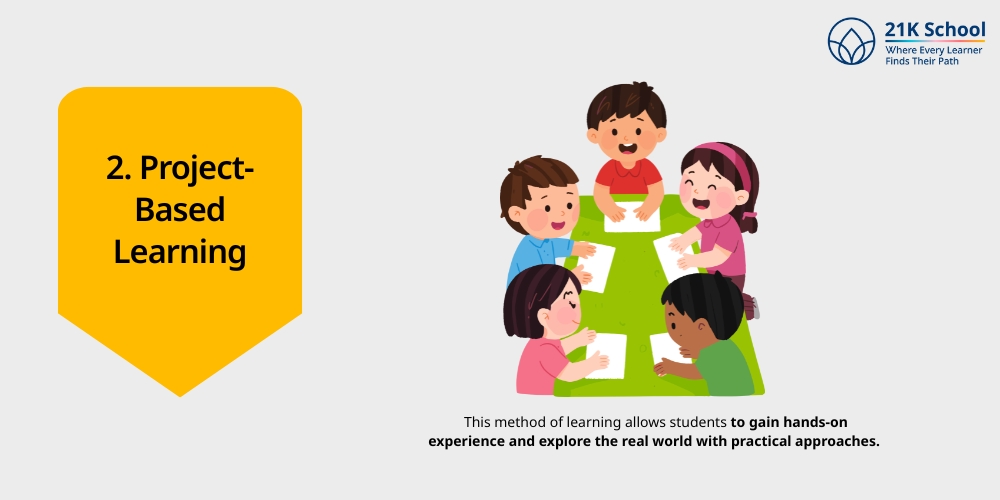
Project-based learning is an interdisciplinary learning method in which students learn by doing practical projects. This method of learning allows students to gain hands-on experience and explore the real world with practical approaches.
Project-based learning also helps in promoting a collaborative learning environment, which allows every individual to share their ideas and create a new solution for difficult problems and contribute their expertise in the field.
3. Problem-Based Learning
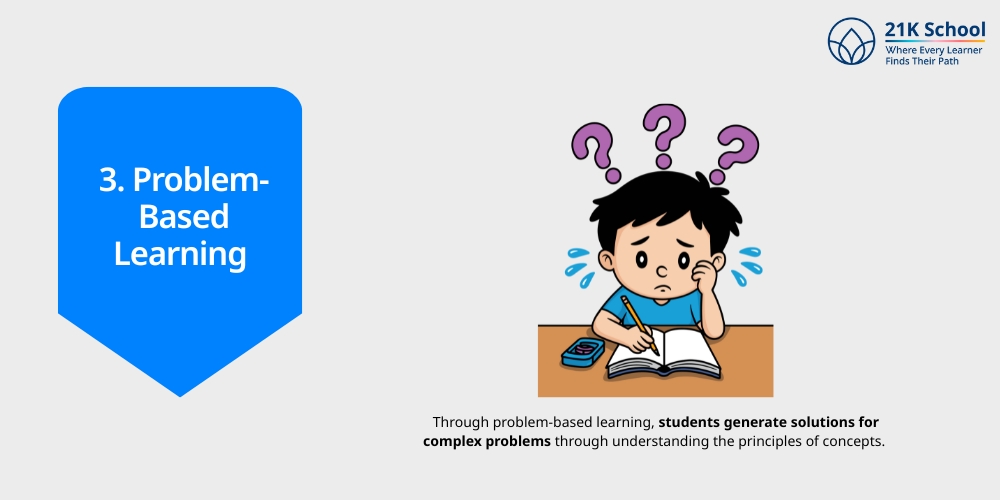
Problem-based learning is a student-centred approach through which they can work in a group or team to develop solutions for the problems. Through problem-based learning, students generate solutions for complex problems through understanding the principles of concepts.
Through teamwork students can build collaborative skills and develop sympathy towards others. Problem-based learning also helps in enhancing critical thinking skills as well as communication skills.
4. Cross-Curricular Assignments
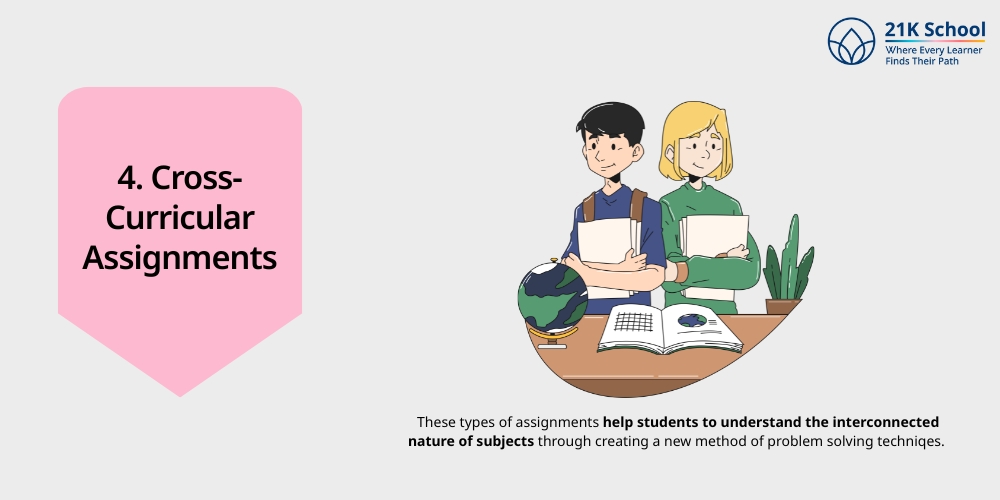
Cross-curricular assignments are a type of sharing knowledge in the form of assignments, by preparing different aspects of subjects into a single aspect.
These types of assignments help students to understand the interconnected nature of subjects through creating a new method of problem solving techniqes.
Evaluating different subjects and creating new solutions after applying different aspects of co-curricular activities and disciplines.
5. Collaborative Learning
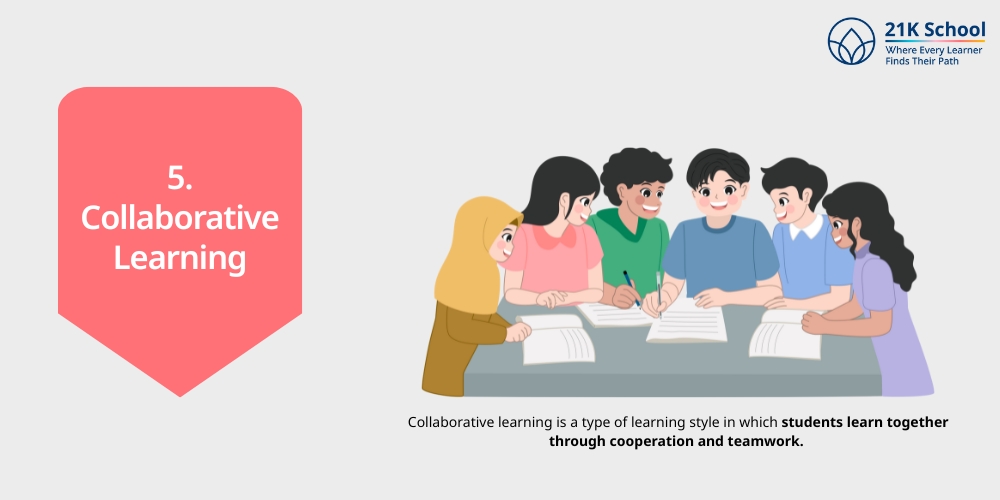
Collaborative learning is a type of learning style in which students learn together through cooperation and teamwork. Collaboration allows students to enhance their engagement.
As compared to traditional aspects of education, benefits of collaborative learning provides students with new age initiatives of knowledge sharing. This makes students more interested in connecting with others and developing strong relationships.
Benefits of Interdisciplinary Learning
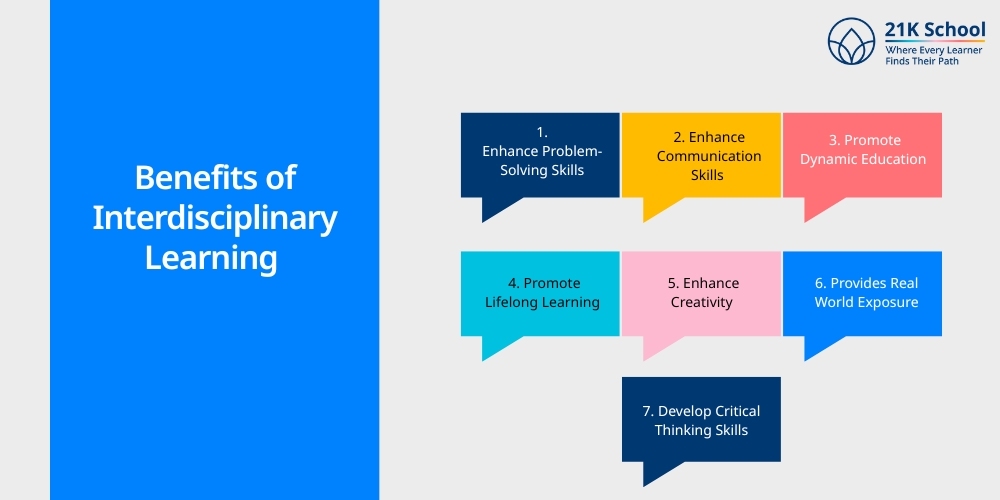
Interdisciplinary learning helps in understanding the importance of learning by asking students, which allows them to develop metacognition and solve problems according to the approaches.
Interdisciplinary learning assists in combining different subjects into a single one that allows them to grasp concepts easily and build different types of aspects for concepts. Here you can check the benefits of interdisciplinary learning mentioned below.
1. Enhance Problem-Solving Skills
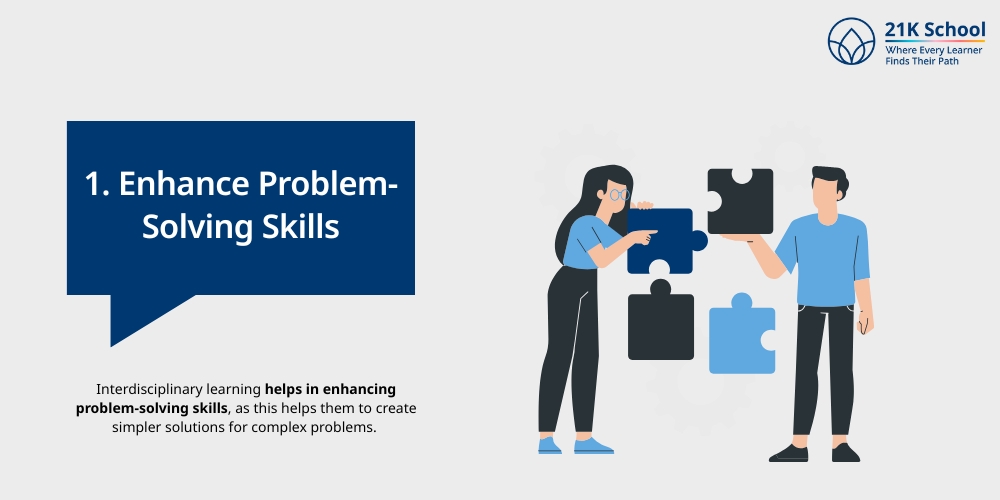
Interdisciplinary learning helps in enhancing problem-solving skills, as this helps them to create simpler solutions for complex problems.
An interdisciplinary learning method helps in breaking the boundaries of a single subject aspect and allows individuals to develop multiple aspects of disciplinary approaches.
With multiple aspects of subject disciplines, students can easily enhance problem-solving skills by integrating different fields. Students can also check how they can improve their problem-solving skills.
2. Enhance Communication Skills
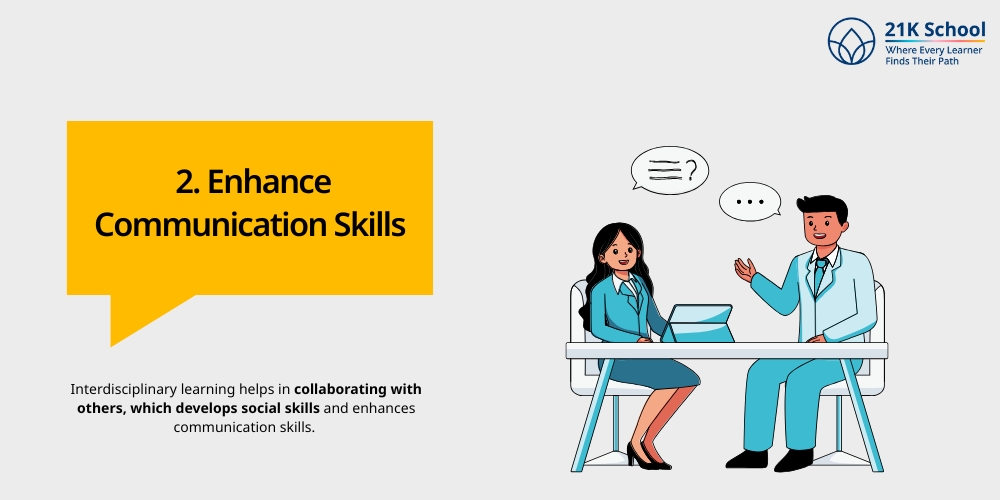
Interdisciplinary learning helps in collaborating with others, which develops social skills and enhances communication skills. Through interdisciplinary learning, students share their ideas, give suggestions, implement new concepts, etc.
Which helps in developing communication skills among students and enhances their confidence as well as critical thinking skills.
3. Promote Dynamic Education
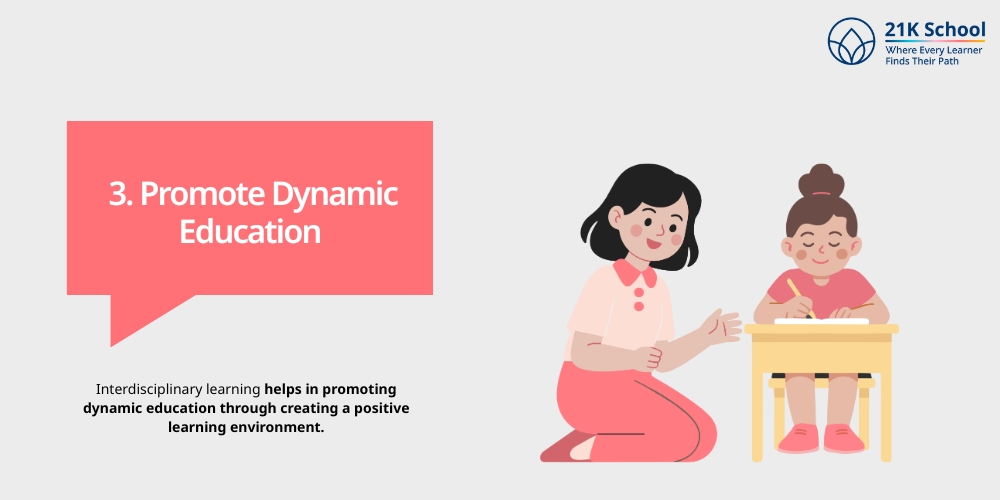
Interdisciplinary learning helps in promoting dynamic education through creating a positive learning environment. Interdisciplinary learning allows students to adapt to the changes according to the approaches and combine different subjects into a single element.
Interdisciplinary education equips students for dynamic situations where they might need to use information from multiple disciplines.
4. Promote Lifelong Learning
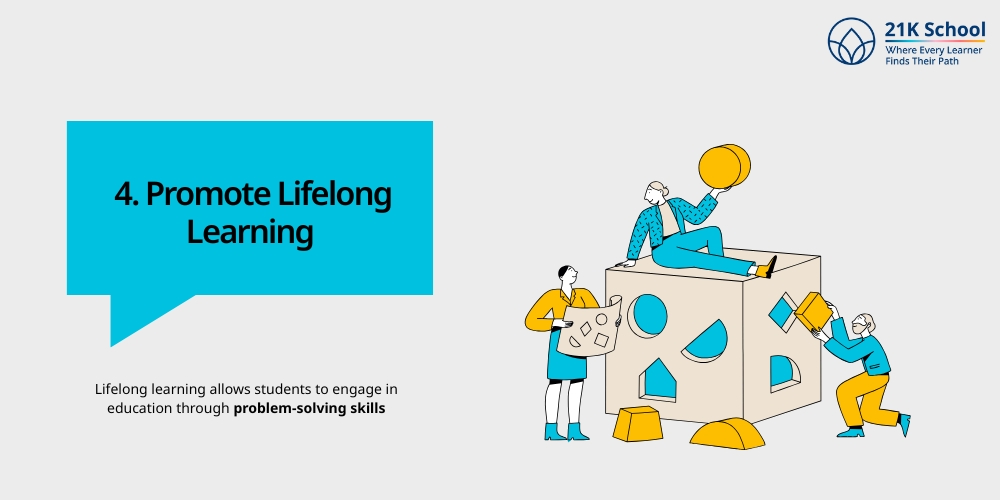
Lifelong learning allows students to engage in education through problem-solving skills. Interdisciplinary learning allows students to develop a sense of curiosity and fosters a mindset for the ongoing process of teaching and learning.
Through different approaches and learning sources, individuals develop a sense of learning styles and improve their ability to interact with others.
5. Enhance Creativity
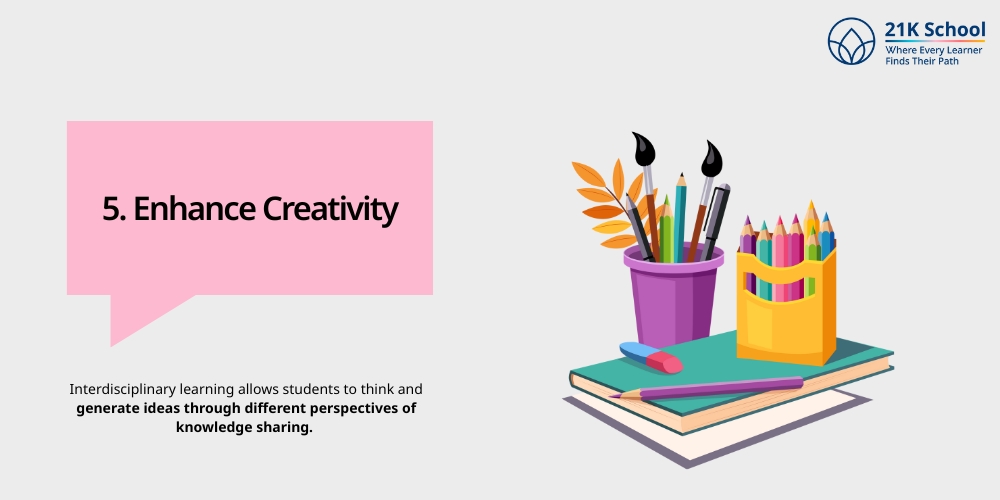
Different approaches to interdisciplinary learning allow students to develop cognitive and creativity abilities. Interdisciplinary learning allows students to think and generate ideas through different perspectives of knowledge sharing.
This allows children to enhance their creative thinking skills and fosters innovation among children as well. A wide range of creative activities for kids are their which help in enhancing creativity among them.
6. Provides Real World Exposure
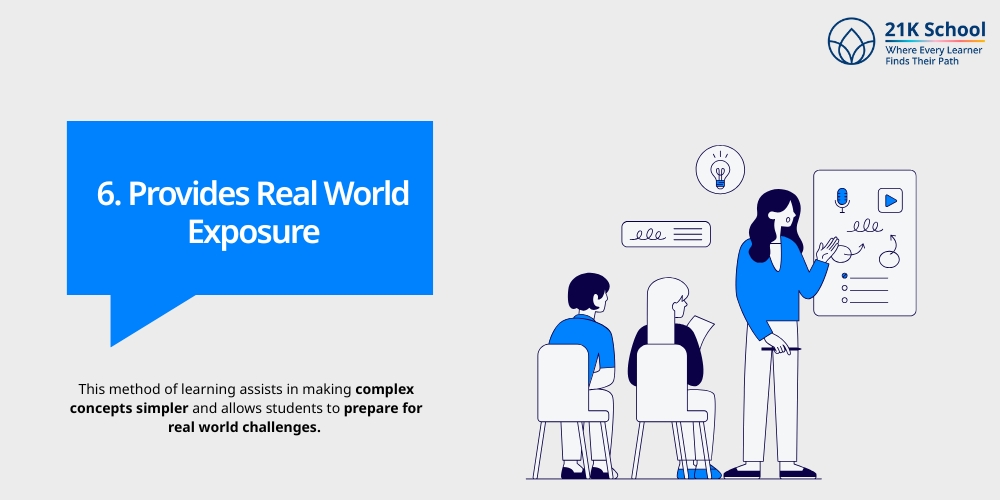
Interdisciplinary learning allows students to engage in real world exposure through different learning styles. This method of learning assists in making complex concepts simpler and allows students to prepare for real world challenges.
This helps them to apply practical aspects to real world scenarios and assist in tackling the challenges.
As every problem of real-world situations requires interdisciplinary skills to generate solutions, as per the complexity of problem.
7. Develop Critical Thinking Skills
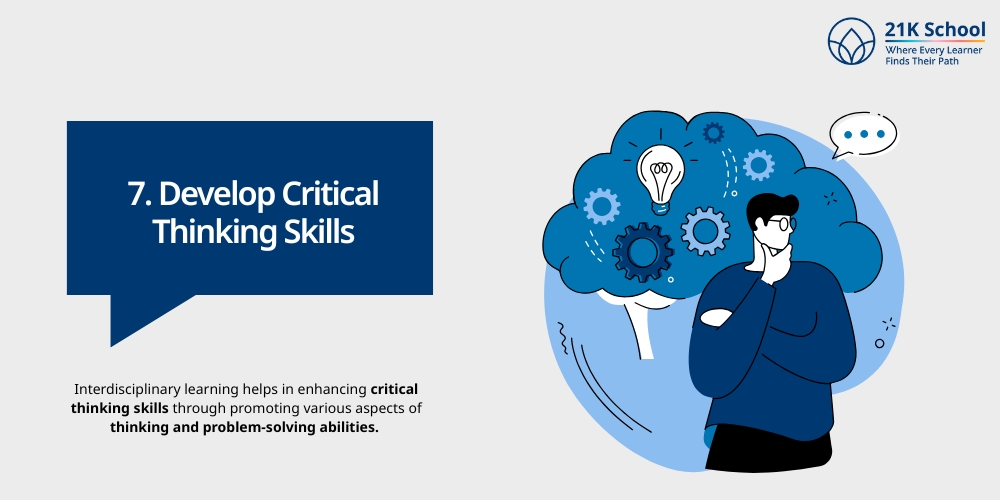
Interdisciplinary learning helps in enhancing critical thinking skills through promoting various aspects of thinking and problem-solving abilities.
Interdisciplinary skills allow students to analyse and evaluate different perspectives on solving any problem and generate new ideas from the existing problem. Due to which, it allows them to enhance their critical thinking skills.
Challenges of Interdisciplinary Learning with Solutions
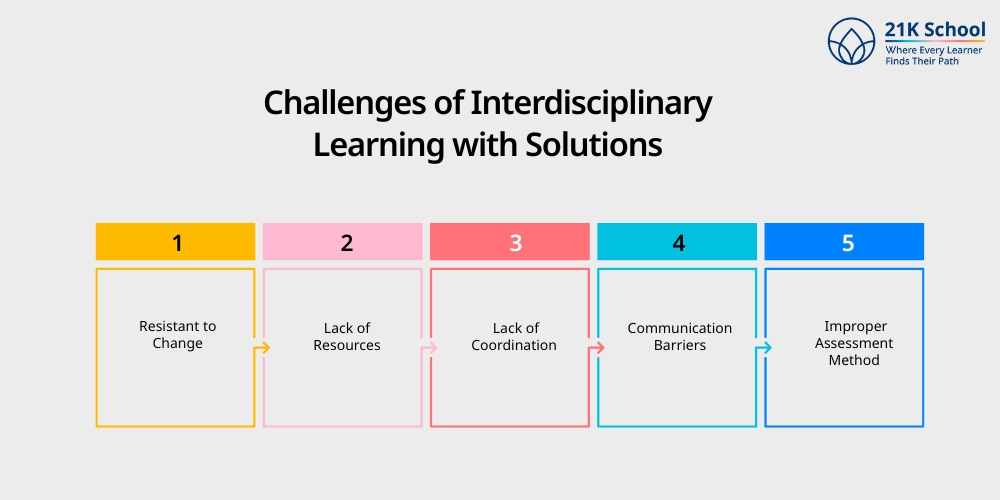
There is no doubt that Interdisciplinary learning helps in enhancing the learning outcome of students by providing a multiple perspectives on different problems.
Interdisciplinary learning is a revolutionary approach to education that promotes a more comprehensive understanding of challenging issues.
However, along with so many benefits interdisciplinary learning faces lots of challenges that hindrances its true potential. Below, you can check the challenges of interdisciplinary learning.
1. Resistant to Change
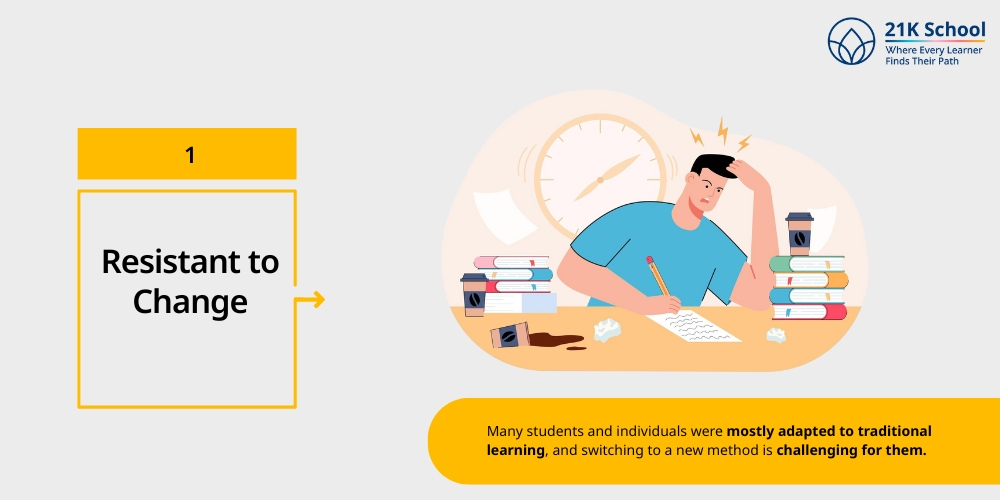
Many students and individuals were mostly adapted to traditional learning, and switching to a new method is challenging for them.
Interdisciplinary learning allows individuals to combine different subjects into a single one to enhance the learning outcomes.
However, it’s a complex process, and due to old methods of teaching and learning, it becomes tough for them to adapt to new learning styles.
- Solutions to Resistance to Change: These problems can be resolved by encouraging students to develop new learning methods and allowing them to think outside of the box.
It is also essential for individuals to actively participate in the learning process and change their habits of mind as well as adapt to new styles to stay updated.
2. Lack of Resources
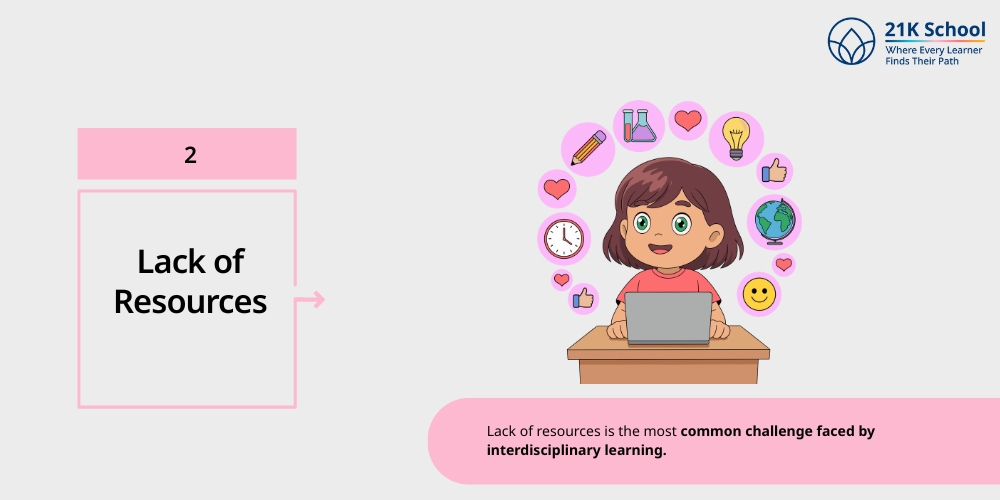
Lack of resources is the most common challenge faced by interdisciplinary learning.
For promoting interdisciplinary learning, proper resources such as infrastructure, faculty, technology in education and proper spaces were required to implement the methods with full potential. However, a lack of resources hindered the actual process.
- Solutions to Lack of Resources: The government should allocate proper resources and funding to institutions in order to implement interdisciplinary learning.
Even schools can utilise all the resources effectively according to the needs and demands of students and new teaching styles.
3. Lack of Coordination
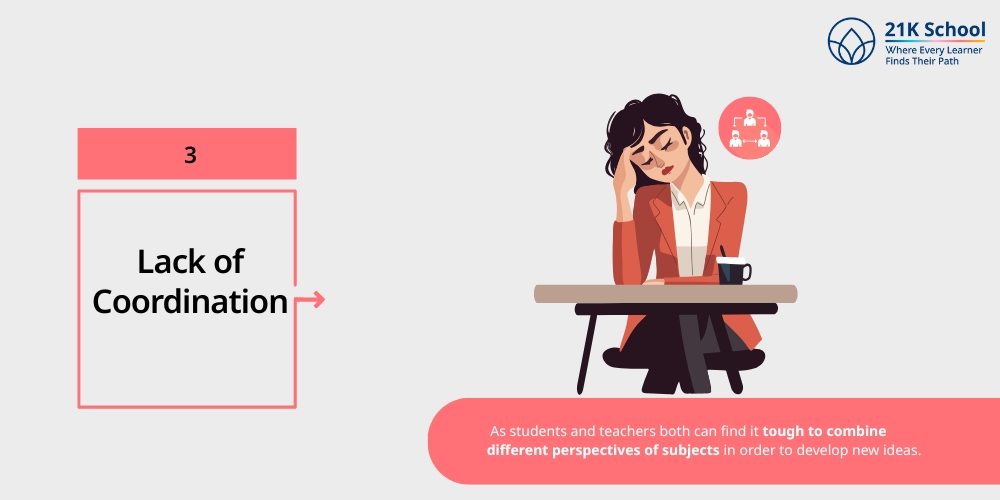
Lack of coordination is the major problem in implementing interdisciplinary learning. As students and teachers both can find it tough to combine different perspectives of subjects in order to develop new ideas.
Aligning these methods and teaching procedures makes it difficult for teachers to teach, and for students, it becomes challenging to understand the concepts.
- Solutions to Coordination: This problem can be mitigated by proper coordination and developing collaborative skills among students and teachers.
A proper teacher-student relationship is essential in developing a sense of community and enhancing the teaching and learning process.
4. Communication Barriers
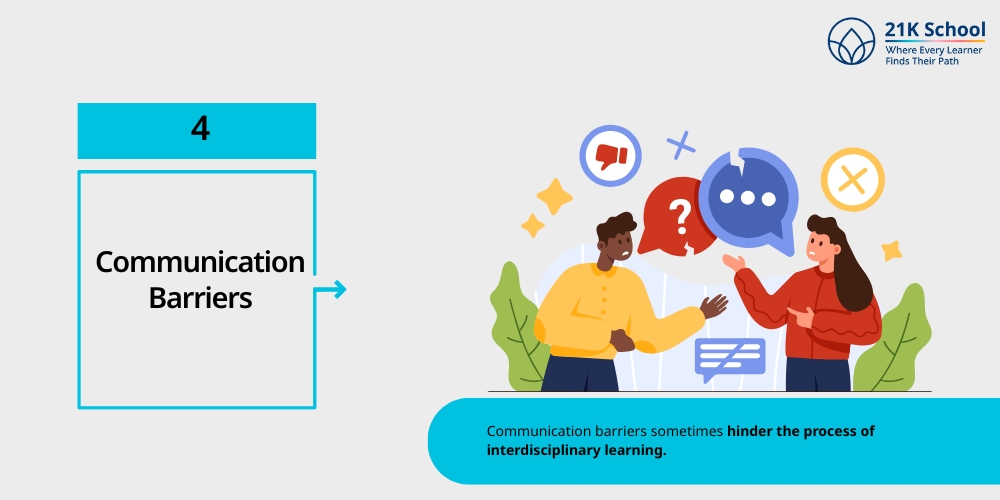
Communication barriers sometimes hinder the process of interdisciplinary learning. Sometimes, merging different concepts to create a new word makes it challenging for them to understand the concepts.
Due to this reason, students find it difficult to communicate effectively and understand their doubts.
- Solutions to Communication Barriers: Communication barriers can be eradicated by using simpler concepts and using regional languages in order to make communication more effective.
Through this, students can grasp concepts more easily and actively participate in the communication process.
5. Improper Assessment Method
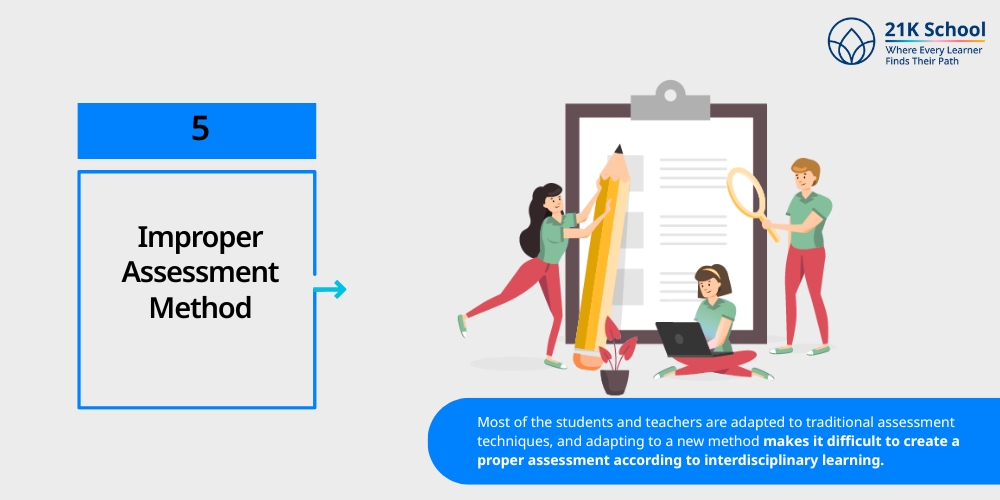
Interdisciplinary learning requires assessment to understand the lessons.
However, most of the students and teachers are adapted to traditional assessment techniques, and adapting to a new method makes it difficult to create a proper assessment according to interdisciplinary learning.
- Solutions to Improper Assessment Methods: Teachers can use formative assessment tools and interactive methods of assessment, which assist students to actively participate in the learning process.
This also aids students in understanding their performance and weaknesses.
Examples of Interdisciplinary Learning
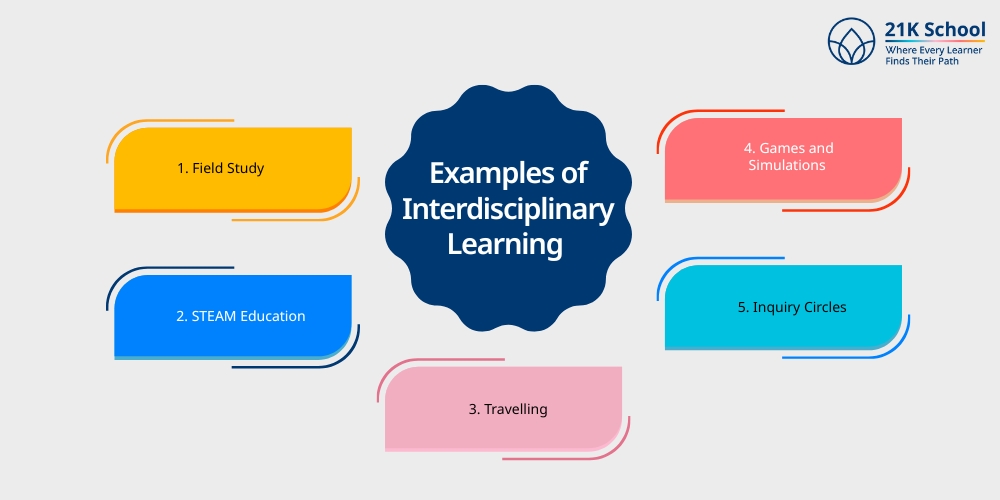
Interdisciplinary learning is mostly used in real world applications, which enables individuals to understand the concept and tackle real world challenges more easily. Interdisciplinary learning is not only limited to academics but is also very vital for professional life.
Here you can check the examples of interdisciplinary learning mentioned below.
1. Field Study
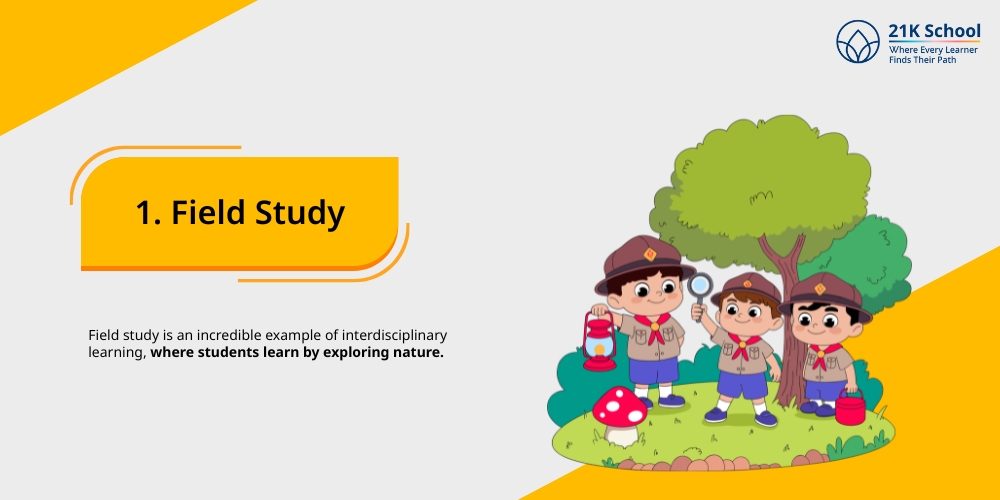
Field study is an incredible example of interdisciplinary learning, where students learn by exploring nature.
Field study enables students to see the real world scenarios and gain practical exposure and enhances practical exposure.
2. STEAM Education
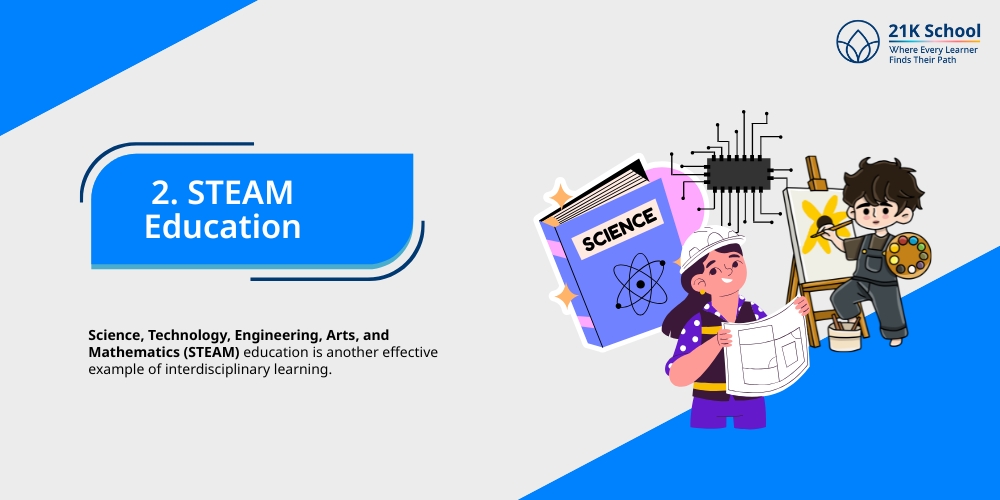
Science, Technology, Engineering, Arts, and Mathematics (STEAM) education is another effective example of interdisciplinary learning. In STEAM education, all subjects were combined to create new perspectives of learning and develop solutions for problems.
STEAM learning allows students to develop critical thinking skills and enhances childrens mental health through combining different aspects of learning.
3. Travelling

Travelling allows individuals to explore real-world scenarios, which enhances their knowledge retention. Students can travel to any location, such as museums, tourist spots, etc.
Through travelling students can enhance their learning knowledge in terms of history, geography, culture, etc. It also promotes cultural awareness among children.
4. Games and Simulations
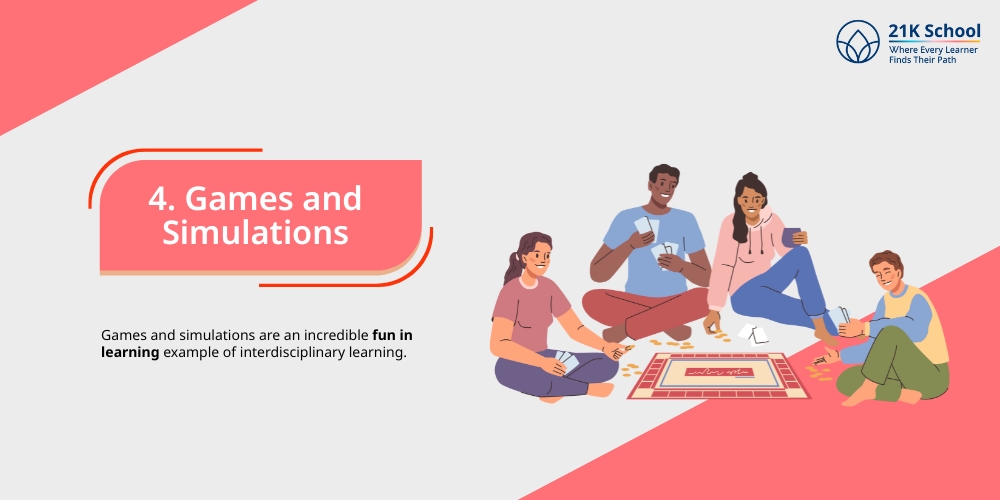
Games and simulations are an incredible fun in learning example of interdisciplinary learning.
Through games and simulations, students can understand the concepts more easily, which helps them to explore the practical insights of real-world applications.
Various games such as Collab, treasure hunt, box maze, etc., also help in enhancing interdisciplinary skills.
5. Inquiry Circles
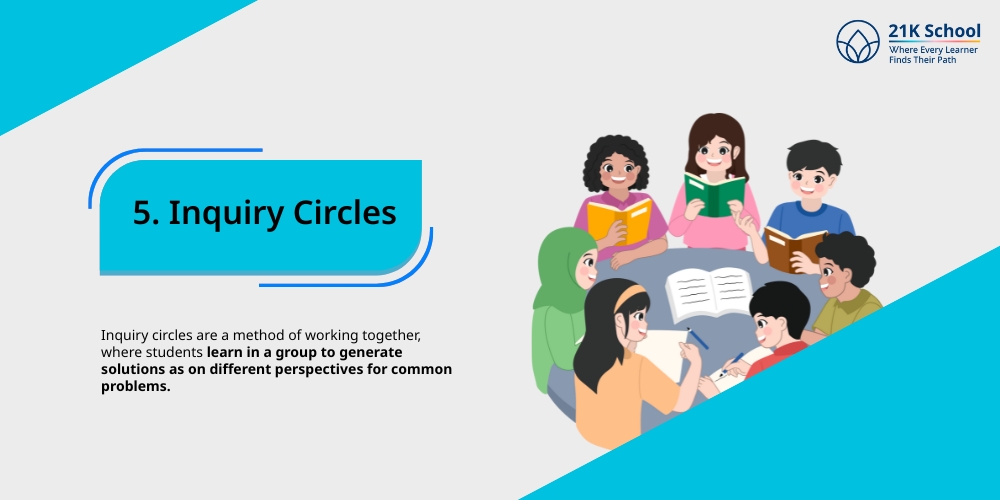
Inquiry circles are a method of working together, where students learn in a group to generate solutions as on different perspectives for common problems.
Children can create inquiry circles in different areas such as ancient civilisations, politics, art, and technology. They can use multiple resources to investigate and present their research.
Summing Thoughts
Beyond conventional subject boundaries, interdisciplinary learning is a revolutionary approach to education that promotes a more comprehensive understanding of challenging issues.
Students gain critical thinking creativity and problem-solving abilities through the integration of multiple disciplines which are crucial for overcoming obstacles in the real world.
Effective strategies and collaboration between educators and students can address obstacles like communication barriers, lack of resources and resistance to change.
Interdisciplinary education fosters lifelong learning and adaptability in a world that is constantly changing by preparing students for dynamic professional settings in addition to improving academic engagement.

